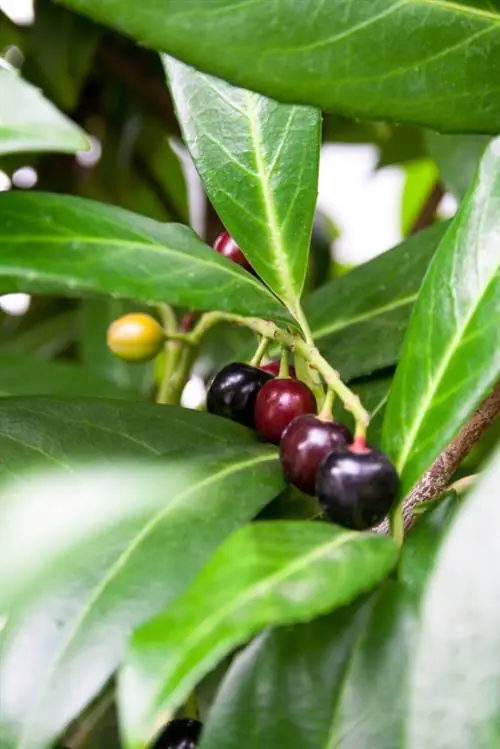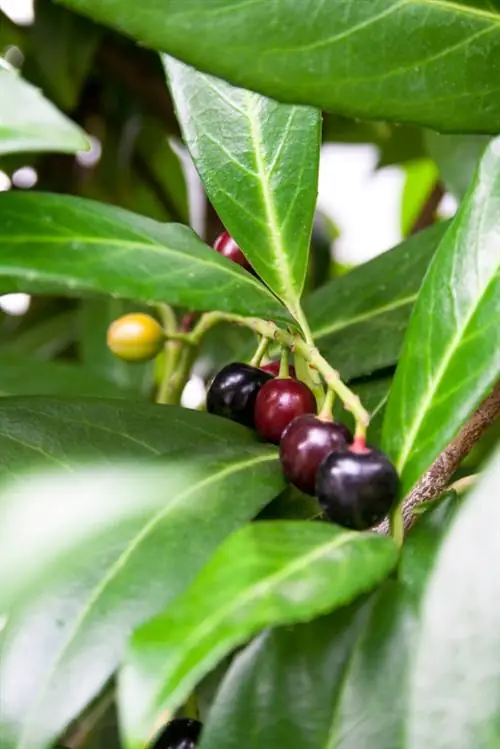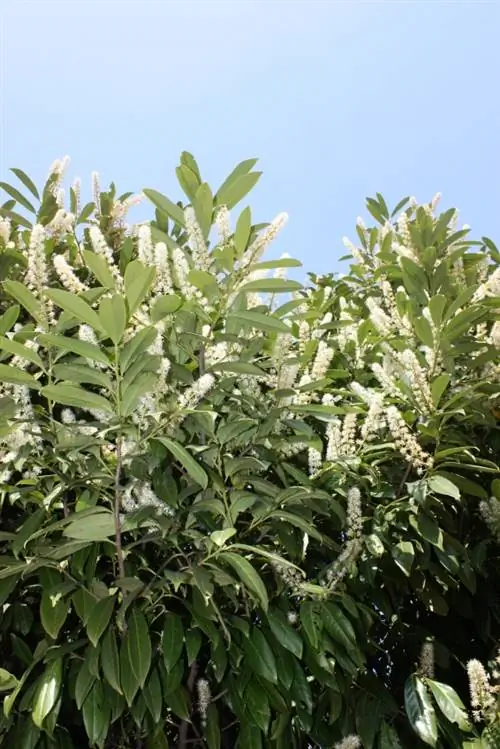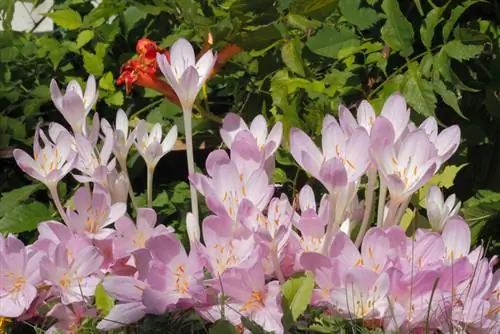- Author admin [email protected].
- Public 2023-12-16 16:46.
- Last modified 2025-01-23 11:20.
The cherry laurel with its beautifully colored, shiny foliage is very popular both as a solitary plant and as a hedge. When other trees shed their leaves in autumn, the evergreen shrub retains its foliage and enchants the winter garden. Numerous fragrant flower umbels appear in spring, from which dark berries develop in the following months.

Are the fruits of the cherry laurel edible?
Answer: The fruits of the cherry laurel have a sweet, juicy flesh that is slightly poisonous. However, the kernels contain hydrogen cyanide and are highly toxic, especially to children and animals. In Turkey the fruits are made into jelly or jam, but this should be left to professionals.
Sweet fruits with a highly poisonous core
The Latin name of the cherry laurel Prunus indicates the close relationship of the ornamental tree with our native plums and cherries. In fact, the shiny black fruits of the cherry laurel, about a centimeter in size, resemble these popular types of fruit.
The flesh of the laurel cherry tastes pleasantly juicy and sweet with a slightly bitter aftertaste. It is where the concentration of toxins contained in all parts of the plant is lowest. The scent and aroma of the fruit is reminiscent of bitter almonds, which also contain traces of hydrogen cyanide and for this reason should not be consumed by children.
Dangerous ingredient in the kernels
The seeds contained in the berries are highly toxic to children, adults and animals. If the seed is bitten when eating the fruit, the hydrogen cyanide is released and this can cause nausea, vomiting, dizziness and stomach pain. Since children are much more sensitive to the toxin, eating just a few fruits can cause them to stop breathing and lose consciousness.
Jelly and jam from the poisonous fruit?
In its Turkish homeland, the fruit of the cherry laurel is considered a delicacy and the berries are commercially available both dried and processed into jelly or jam. This is possible because the flesh of the laurel cherry is only slightly toxic and the toxins are partially destroyed by the drying and cooking process. However, you should leave the preparation of jellies from cherry laurel fruits to the professionals. When the berries are passed through, the seeds could break and the toxin could pass into the fruit puree and make it inedible.
Decorative berries perform better
In households where small children live and on sidewalks, it is therefore advisable to cut back the laurel cherry immediately after it has bloomed. This means the bees can feast on the nectar of the flowers, but there is no risk of children unintentionally snacking on the berries.
If you don't want to completely miss out on the pretty berry decorations, you should at least remove everything that has faded in the lower area. This cut also has advantages for the plant, which grows more vigorously as a result. Flowers and fruits need to be nourished and their development requires a lot of nutrients.
Tips & Tricks
With a little patience, you can grow new cherry laurel bushes yourself from the seeds contained in the fruits. Propagation by seeds often happens all by itself, so that in the spring you can dig up the germinated young plants in the vicinity of an existing cherry laurel and move them to the desired location.






